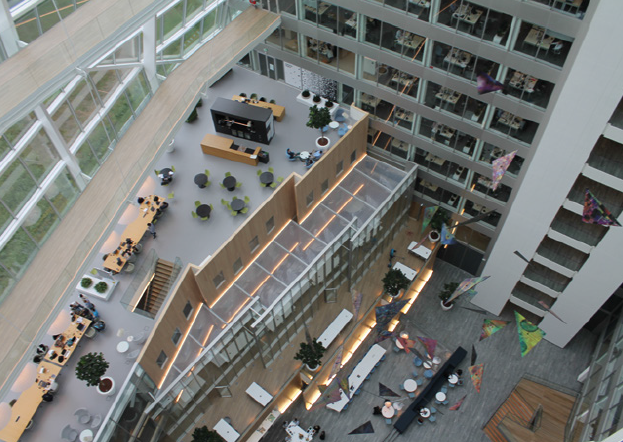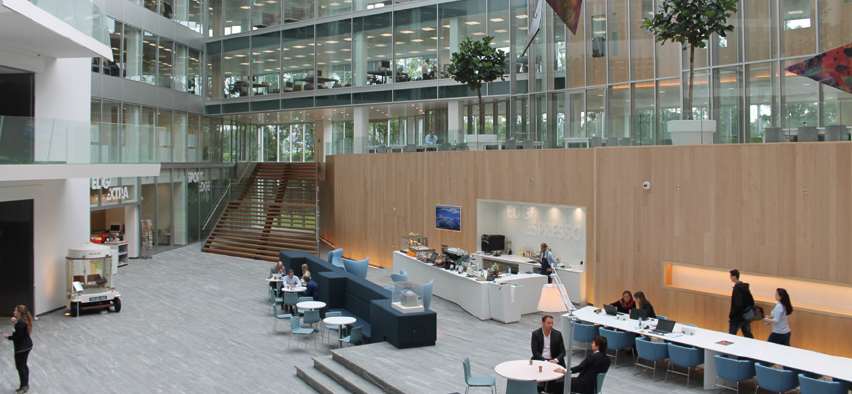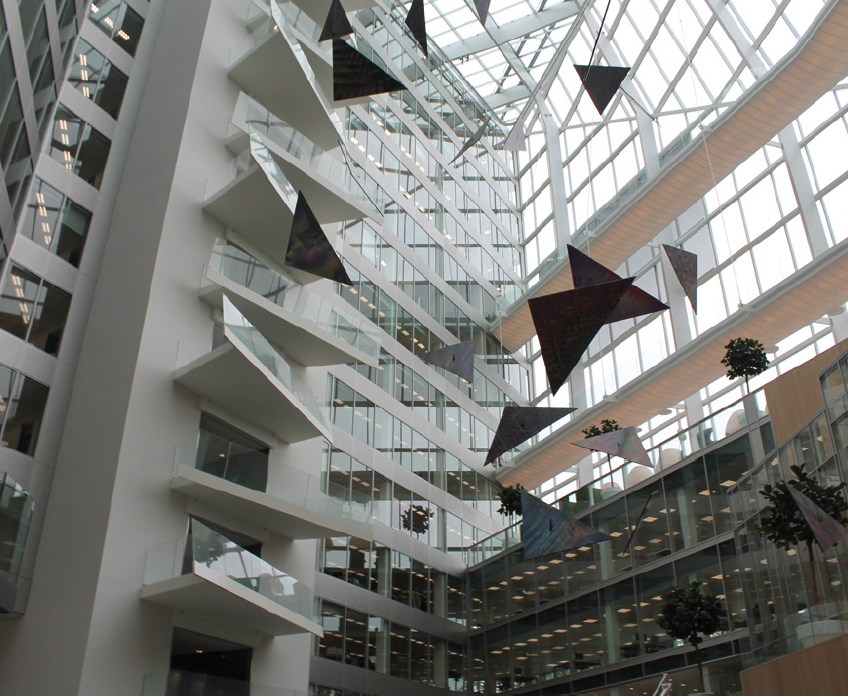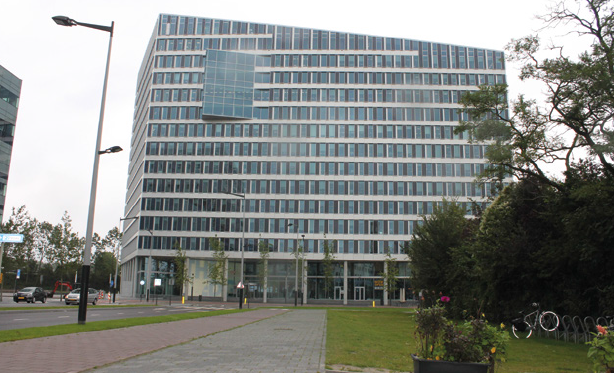The EDGE – Europe’s most sustainable building takes an extra step towards a healthy indoor climate
Europe’s most sustainable office building is located on the Amsterdam Zuidas. The Edge has obtained a sustainability score of no less than 98.36% (BREEAM-NL) thanks to smart technological innovations. The building, which is developed by OVG-Real Estate, has a floor space of 35,000m2 and is built with efficient energy consumption and sustainability in mind. The Edge owes its name to the impressive shape with sharp edges.

Light-over-Ethernet by Philips is an example of such a smart technological innovation in the office building. The system offers employees the possibility to adjust light and climate of the workplace themselves via an app. 30,000 sensors enable in advance-adjustment to personal preferences in various spaces such as meeting rooms and workplaces. Together with all types of other sustainable provisions such as solar panels, heat/cold storage (WKO), strongly insulating glazing and rainwater harvesting for flushing the toilets, the Edge is capable to consume 70% less electricity than similar buildings.
Check out this video about The EDGE
 Healthy indoor climate
Healthy indoor climate
The building is located along the busy A10 motorway. Joost Verhulsdonck, Senior Technical Manager at CBRE: “Right now, Rijkswaterstaat is fully engaged in broadening the motorway which means that the amount of traffic will increase enormously in the future. Not only that, but a lot of building activities are going on around the building – you can imagine that, because of this, we are dealing with a high concentration of particulate matter in the air. Off course we feel responsible for the wellbeing of the people working in the building. To make a substantial contribution to the health of those people, the air quality inside the building has to be optimal.” To achieve this, a collaborative partnership between HOMIJ Technische Installaties and Bosman bedrijven (collaborating under the name HBC, HOMIJ Bosman Combinatie) has been closely involved in the installation and maintenance of all electronic matters from the design phase.

Wilco Vinke, Service Manager at HOMIJ: “During construction we started looking for an air handling system which would on the one hand consume as little energy as possible and realise the highest possible air quality on the other hand. In the end we have opted for air handling units with a frequency regulator. These units work with a variable rotational speed which means that the air handling unit adjusts itself to the air volume from the control technique and the air resistance over the air filter. Despite the fact that the new systems have been built from the ground up with an efficient operation in mind, we keep looking for improvements that we can apply inside the building – the developments in the field of sustainability have really been racing ahead these past few years.”

“We are responsible for the electro-technical side of the story. We only see advantages in the field of energy savings from this perspective. The collaboration between HOMIJ, CBRE, AFPRO filters and us is a good example of a chain partnership.” – Willem de Bruin, account manager Bosman bedrijven
Improved air quality and savings
“We feel it’s important that our tenants are able to work in the healthiest environment possible. These new air filters enable us to further improve the indoor climate and make an extra contribution to the well-being of these people. The new filter is slightly more expensive, but we will probably recoup that in the near future.” – Joost Verhulsdonck, Senior Technical Manager CBRE
Together with the HOMIJ Bosman Combinatie, AFPRO Filters looked for a way to further improve the air quality inside the building and to reduce the energy consumption at the same time. Maurice Gijzen, senior account manager at AFPRO Filters: “At the time, I recommended switching to an ePM1-air filter, which complies with the new, strict ISO16890-norm. This switch ensures a further improvement of the indoor air quality with no less than 25%. The filter also has a lower initial resistance which means that the monitor in the air handling unit doesn’t have to rotate that much. This saves energy and therefore reduces the CO2-emmission.” Vinke agrees: “The building has an air volume of approximately 90,000 m3. For the office rooms we use a ventilation rate of 1.95 and for the meeting rooms a ventilation rate of 6. With these volumes of air are being pumped into the building even a small improvement yields big results.”Verhulsdonck: “We feel it’s important that our tenants work in the healthiest environment as possible. These new air filters enable us to further improve the indoor climate which allows us to make an extra contribution to the well-being of these people. The new filter is slightly more expensive, but we will probably recoup that in the near future. The energy reduction combined with increased lifetime of the filter ensures quite a saving on energy, labour, material and disposal costs.”
Sources and special thanks to CBRE, Bosman bedrijven (and Duurzaamgebouwd for the pictures).





